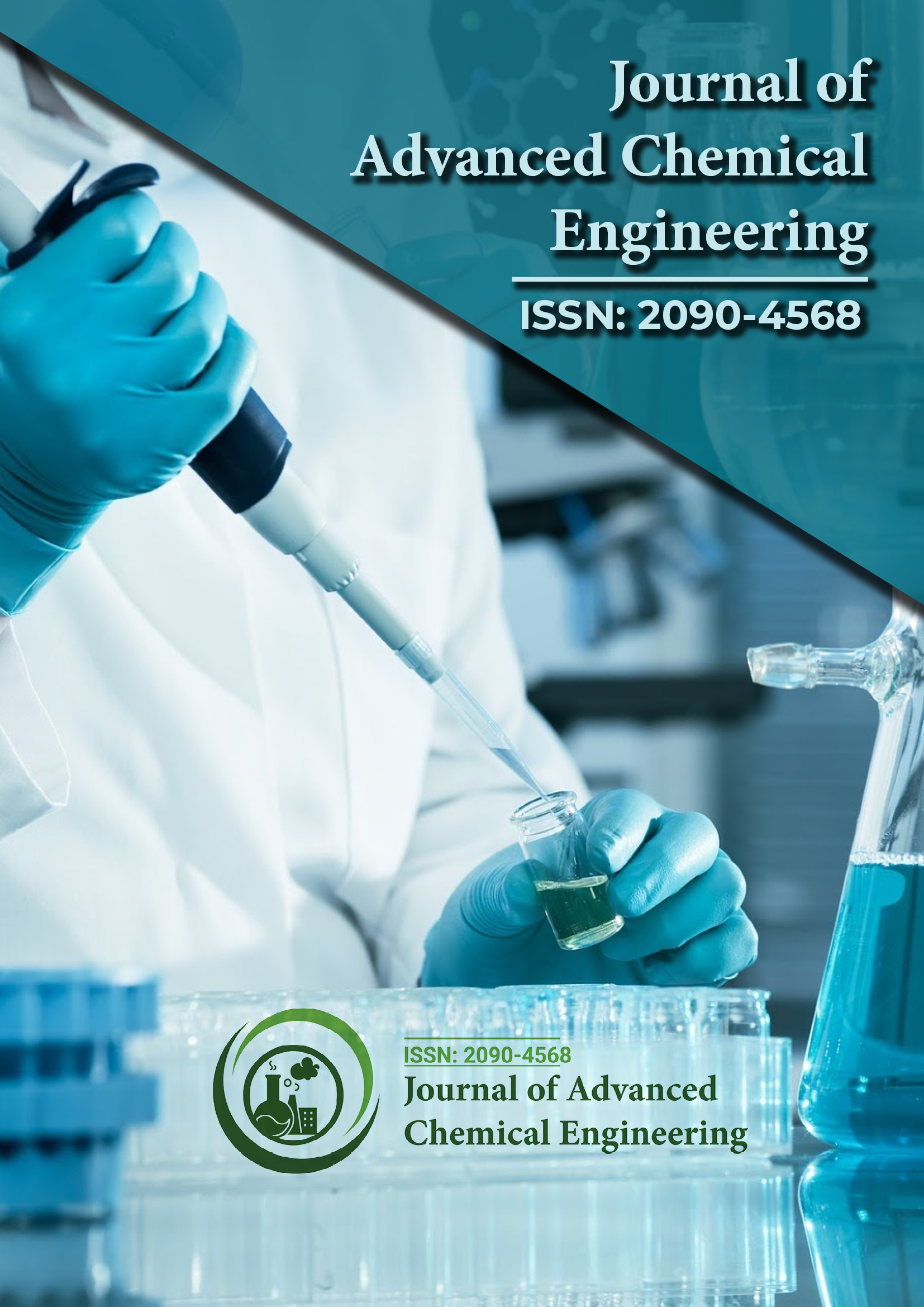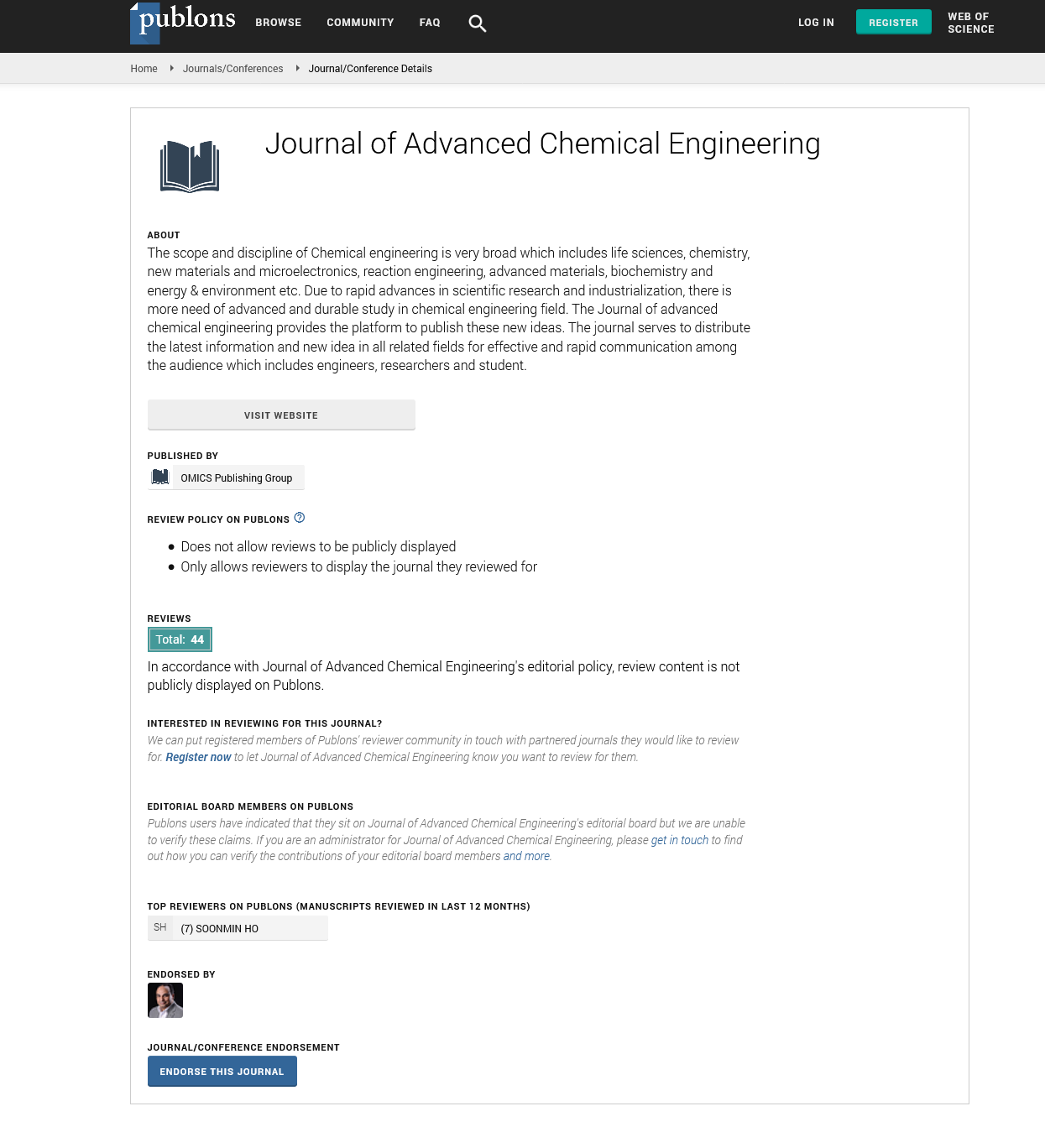Indexed In
- Open J Gate
- Genamics JournalSeek
- Smithers Rapra
- RefSeek
- Directory of Research Journal Indexing (DRJI)
- Hamdard University
- EBSCO A-Z
- OCLC- WorldCat
- Scholarsteer
- Publons
- Geneva Foundation for Medical Education and Research
- Google Scholar
Useful Links
Share This Page
Journal Flyer

Open Access Journals
- Agri and Aquaculture
- Biochemistry
- Bioinformatics & Systems Biology
- Business & Management
- Chemistry
- Clinical Sciences
- Engineering
- Food & Nutrition
- General Science
- Genetics & Molecular Biology
- Immunology & Microbiology
- Medical Sciences
- Neuroscience & Psychology
- Nursing & Health Care
- Pharmaceutical Sciences
Commentary - (2025) Volume 15, Issue 1
Advances in Catalytic Conversion of Biomass-Derived Compounds to Green Fuels: A Sustainable study
Lorenzo Martín*Received: 03-Mar-2025, Manuscript No. ACE-25-29150; Editor assigned: 05-Mar-2025, Pre QC No. ACE-25-29150 (PQ); Reviewed: 19-Mar-2025, QC No. ACE-25-29150; Revised: 26-Mar-2025, Manuscript No. ACE-25-29150 (R); Published: 02-Apr-2025, DOI: 10.35248/2090-4568.25.15.354
Description
The global demand for energy continues to rise while concerns about climate change and fossil fuel depletion press scientists and policymakers to explore more sustainable energy alternatives. One of the most promising approaches in recent years has been the catalytic conversion of biomass-derived compounds into green fuels. This field, residing at the intersection of chemical engineering and environmental science, has seen a rapid evolution thanks to innovations in catalyst design, reaction engineering, and feedstock flexibility. Biomass as a renewable source is particularly attractive due to its carbon-neutral cycle and vast availability, especially agricultural waste, forestry residues, and energy crops. Unlike fossil fuels, biomass absorbs carbon dioxide during its growth phase, potentially offsetting emissions generated during conversion processes. However, converting raw biomass into high-quality fuels is not straightforward, requiring intricate chemical transformations that are both selective and energy-efficient. This is where the role of advanced catalytic systems becomes essential. Catalytic upgrading processes such as Hydrodeoxygenation (HDO), reforming, and pyrolysis are central to this transformation. One of the major challenges in biomass conversion is the high oxygen content in the feedstock, which makes the resulting products unstable and less energy-dense. Catalysts facilitate the selective removal of oxygen atoms in the form of water or carbon dioxide, leading to more stable hydrocarbons similar to traditional fuels. Recent developments in bimetallic catalysts, such as Pt-Co and Ni-Mo combinations, have shown remarkable improvements in both activity and selectivity, especially under mild reaction conditions.
Another significant advancement is in the field of zeolite-based catalysts, which offer unique pore structures ideal for tailoring the shape and size of molecules formed during biomass conversion. The acidity and thermal stability of zeolites like HZSM- 5 make them particularly effective in deoxygenation and aromatic hydrocarbon production. Research has also focused on modifying these zeolites with metal dopants or hierarchical pore systems to enhance their diffusion and resistance to deactivation.
The shift towards using lignocellulosic biomass, which does not compete with food sources, has further necessitated the development of robust pretreatment and fractionation strategies. Breaking down cellulose, hemicellulose, and lignin into fermentable sugars or platform chemicals is energy-intensive and often involves harsh chemicals. Integration of catalytic processes into these stages has reduced energy requirements and improved product yields. Ionic liquids and deep eutectic solvents, in combination with solid acid catalysts, are being explored to facilitate efficient biomass depolymerization while maintaining environmental safety.
Beyond catalyst performance, the design of the reactor system plays a critical role. Fixed-bed, fluidized-bed, and trickle-bed reactors each offer unique advantages for different feedstocks and process conditions. Continuous flow reactors, in particular, have gained traction due to their superior scalability and process control. Advances in Computational Fluid Dynamics (CFD) and machine learning models now enable precise optimization of these systems for maximum conversion and minimal by-product formation.
Life-Cycle Assessment (LCA) of catalytic biomass conversion processes is another area of intense research. Understanding the environmental impact of raw material sourcing, catalyst production, and downstream processing allows for the identification of bottlenecks and opportunities for improvement. Techno-economic analysis is often coupled with LCA to determine the commercial viability of proposed systems, especially for biofuel production at industrial scales.
In terms of policy, the alignment of chemical engineering advancements with renewable energy mandates is driving funding and commercialization. In the European Union and the United States, several initiatives have been launched to integrate advanced biofuels into national energy grids. Public-private partnerships and academic-industrial collaborations are facilitating the translation of laboratory-scale breakthroughs into deployable technologies.
Future directions in this field point toward multifunctional catalysts that can perform sequential reactions in a single reactor, reducing energy use and equipment cost. The use of artificial intelligence for predictive catalyst design and automated process control is expected to revolutionize biomass conversion. Additionally, hybrid systems combining biochemical and thermochemical routes could offer greater flexibility and yield.
Citation: Martín L (2025). Advances in Catalytic Conversion of Biomass-Derived Compounds to Green Fuels: A Sustainable study. Adv Chem Eng. 15:354.
Copyright: © 2025 Martín L. This is an open-access article distributed under the terms of the Creative Commons Attribution License, which permits unrestricted use, distribution, and reproduction in any medium, provided the original author and source are credited.

